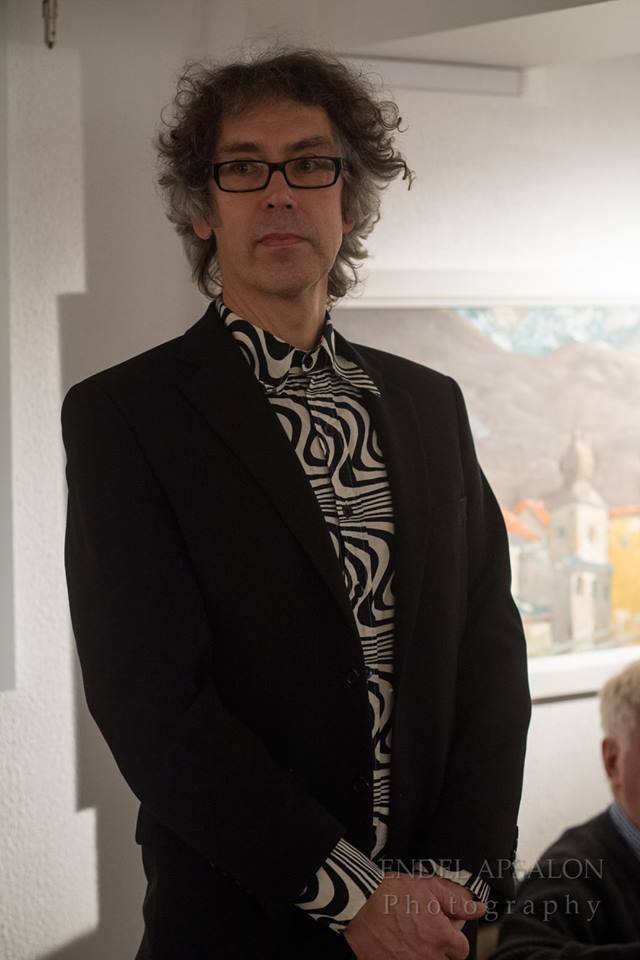Please tell us about your home. How did the environment, in which you grew up, affect you?
For a child, their home is always a completely normal place taken for granted; but when I went to my friends’ houses, I saw how they were living there, and I was always very surprised how bare their homes were. Every centimetre of available wall space in our home was covered with pictures, photos, icons; all of the shelves and cupboards had forms, figures, objects of every possible kind; and it was only a while later when I finally understood that it was bareness and emptiness that was normal, and that my home was the exception. I think that the home environment determines the figurative and visual language, which is spoken later, and which is primarily understood. Of course, I drew as a child, as all children do; but on Sundays my father sometimes took me to the studio and it was then that I was given a piece of cardboard, brush and colours – which could be squeezed from a tube – and this was the “real thing”. The studio was exciting, it smelt of a wonderful incense, which was created by turpentine, oils and restoration chemicals. Now, my own studio smells the same. I am discovering that I am becoming more like my father every day. It can be said that I became an artist by chance. I did not know what I wanted. Painting came about somewhat spontaneously, my parents did not influence me, (giggling exorbitantly); but I guess they felt a certain relief when they saw where I was moving towards, because considering my poor ability to cope in life and the fact that I would not have become an active person, this course of events was the best.
You are an artist as well as an icon restorer, how are these activities connected? If we approach this topic from the most pragmatic side, then an artist does what they want – something goes wrong, they repaint – but a restorer has a big responsibility if they happen to “mess up” a historical piece.
This is indeed a very practical point of view, but an artist’s responsibility is completely unique, because everything that they do stays somewhere and affects the surroundings. The energy and message distributed by their work is very important, the author remains connected to their work for the rest of their life and sometimes even longer. Whatever the artist is doing, they are fixing a certain truth with it. A restorer’s responsibility is never that big, their task is to ensure protection and restoration, but the meaning of the work does not change due to the restorer’s actions. An icon can, obviously, be restored, as can any other object, but any meaningful activity is always much more significant and effective. If you are aware of the object’s function, you will have a different attitude towards the process and this affects your result. My father loved to compare an icon’s restoration to the first day of the world’s creation, when God said: “Let there be light”. The restorer brings, in the same way, a work’s beauty and divinity out of the dirt and old layers. It sounds grand, but the restorer is rediscovering light.
You are talking about beauty, how important is it?
Aesthetics is important, as it helps to reach morality. If we talk about the principles of the Eastern Orthodox Church, truth and beauty are closely related terms there. Truth cannot be ugly. The beauty in icons has helped to find beauty in the world and in people, to see connections between them in every activity.
But art, what do you think the role of art is in society?
In the current world, art has become a notion of its own, but it should be an organic part of life. A work of art is a mediator between the borders of invisible and visible. More or less every art history course starts with cave drawings and usually it is thought that if this primitive human creature had a full stomach, he was warm and there was time left over, then he started to carve something between his fingers and draw everything that he had experienced during the day on the wall. But maybe it was the other way around? Maybe it was this way that art was followed by hunting, and that drawings on cave walls were a basis for a successful hunt. Art helps you to relate better to your activity and the world in general. The world consists of two sides – visible-invisible – and can properly work only if both sides are active. Today’s “problem” is that man no longer accepts himself as part of a whole, man is the king of nature, but not a dictatorial ruler, instead being a smart and righteous servant. The position of an artist, even in the most hierarchical society, is to be free, to exist outside of those hierarchies, they can rise and fall, but they cannot be foolish, they are responsible for what is done, because if you show that you are creative, more is expected from you.
.png)
